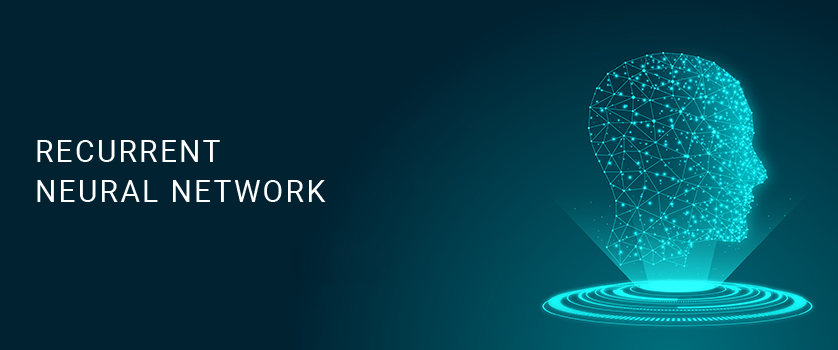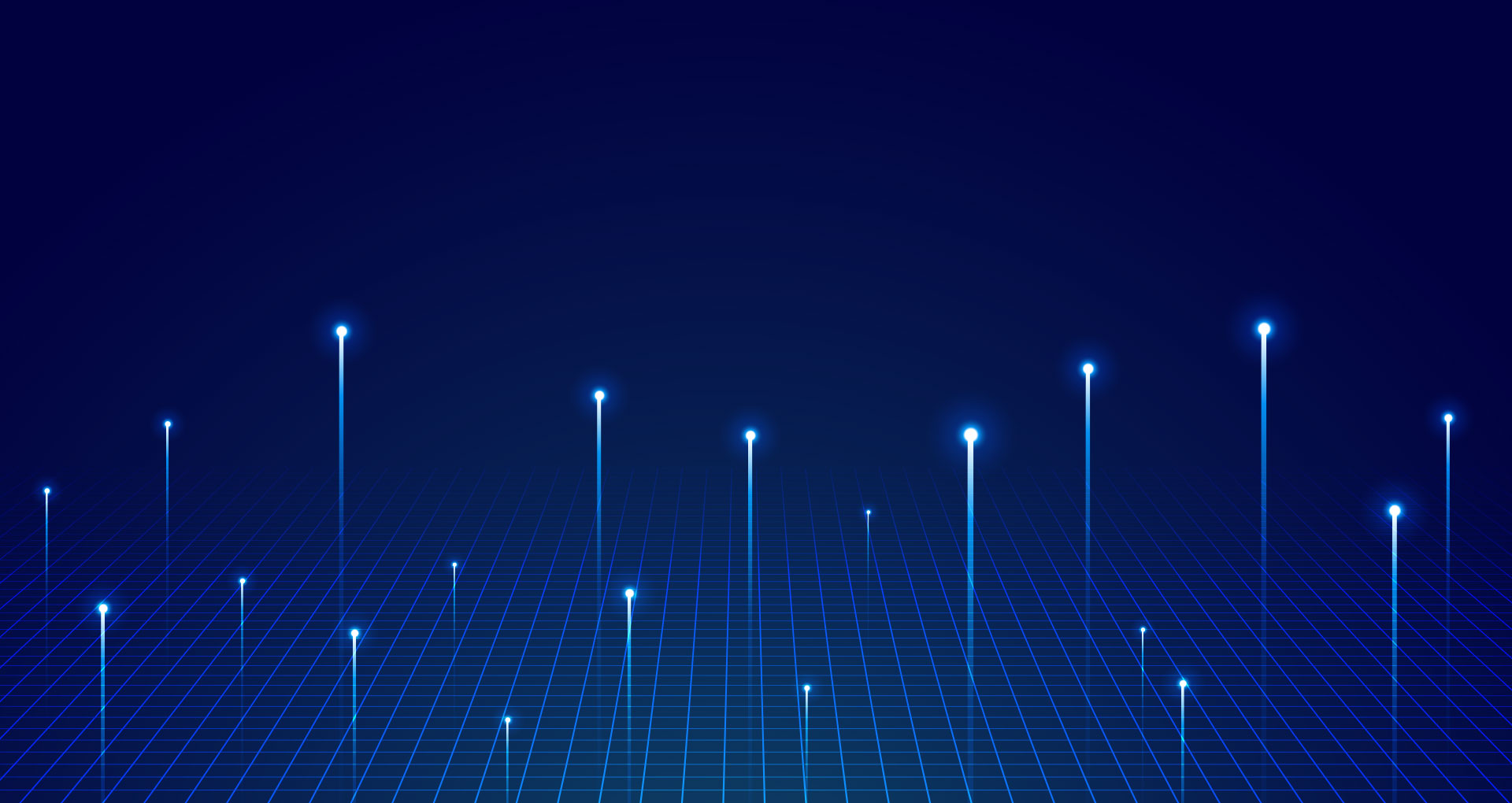
Anshul Jain
AAugust 14, 2020
Introduction:
The current adaption of artificial intelligence and machine learning, as well as the subsequent development of neural networks, has transformed the way information and data are perceived and assessed around the world. Embedded with these technologies, today, machines are well adept to perform functions far superior to humans' capabilities and deliver the most appropriate results, using simple and shortest paths.
That's not all!
Industries are leveraging the capabilities of machine learning and artificial neural networks (ANNs), and its various types like Recurrent Neural Networks, Feedforward Neural Network, Modular Neural Network, etc. to develop powerful systems that can solve complex many real-world problems. Among these types of ANNs, the recurrent neural network is gaining tremendous popularity because of its ability to process sequential data and recognize patterns.
So, if you are interested in understanding the concepts of Recurrent Neural Networks then this is the place for you. As in this article today, we will not only be discussing the concepts of RNNs but also answering some major questions like:
- How do recurrent neural networks work?
- What is the main advantage of recurrent neural networks?
- RNN Vs CNN.
But, let's begin with the most crucial question:
What is Recurrent Neural Network(RNN)?
Defined as a class of artificial neural networks, Recurrent Neural Networks are based on the works of David Rumelhart in 1986 and are designed to recognize sequential characteristics of data and use patterns to make predictions about the next likely scenario. Used in deep learning, the objective of RNNs is to produce an output based on the previous input.
Derived from feedforward neural networks, recurrent neural networks utilize its memory to process sequences of inputs. Here, connections between nodes of neurons form a directed graph of temporal sequences, which further helps RNNs exhibit dynamic behavior.
The characteristic that sets Recurrent Neural Network apart from other types of neural networks is that unlike other ANNs that directly process training data, RNNs keeps in mind the relations as well as the context between the different segments of data. In short, it is the only neural network type that remembers the most recent input and makes use of memory elements to provide a suitable output.
Recurrent Neural Network Example:
Apple's Siri and Google's Voice Search use recurrent neural networks to successfully complete the requested tasks. However, a machine translation is another common example of recurrent neural networks, where the neural networks take an input sentence in a specific language and translate it into the specified language, for example, English.
In this scenario, the neural network determines the likeliness of words in the output sentence and translates it based on the word itself and the previous sentence.
How does Recurrent Neural Network Works?
As defined earlier, recurrent neural networks rely on previous experiences to reach a conclusion, which is made possible by its chain-like architecture. Moreover, like the traditional artificial neural networks, RNN consists of three layers that represent different stages of the process:
- Input Layer: Represents the information to be processed.
- Hidden Layer: Represents the algorithms at work.
- Output Layer: Finally, the last layer represents the result of the process.
These help Recurrent Neural Network to operate across sequences of vectors in the input, output, or both and be suitable for performing tasks such as speech recognition, natural language processing, and more.
Recurrent Neural Network Types:
Prominently used in fields such as natural language processing, speech recognition, handwriting recognition, machine translation, and more, the recurrent neural network is categorized into four major types based on its architecture, which are:
- One to One: A traditional and basic type of RNNs architectures, one to one recurrent neural network offers a single output for a single input. Also known as Vanilla RNN, it is represented with the help of the following:
- Tx=Ty=1
- One to Many: This type of RNN is mainly used in scenarios where multiple outputs are given for a single input. Music generation models are one common example of one to many recurrent neural network architecture. This is represented in through the following
- Tx=1, Ty>1
- Many to One: Unlike One to Many RNN, Many to One RNN is used in scenarios where multiple inputs are required to give a single output, for example in sentiment analysis models. This recurrent neural network architecture is represented as:
- Tx>1, Ty=1
- Many to Many: Also referred to as sequence-to-sequence RNN, this last type of RNN, as the name suggests, is used when multiple inputs are required to deliver multiple outputs. However, this is represented through two different concepts,
- Tx=Ty: It refers to scenarios with the same inputs and outputs size. Eg: Name Entity Recognition.
- Tx!=Ty: It refers to cases with inputs and outputs layers of different sizes. Eg: Machine Translation.
Now that we have a basic understanding of Recurrent Neural Networks, let us move on to answering another common question what is Recurrent Neural Network Used For?
Recurrent Neural Network Applications:
Initially designed to make predictions about most likely scenarios, over the past few years, recurrent neural networks have been successfully applied to a variety of tasks and applications, a few of which include:
- Temporal Analysis: The importance of recurrent neural networks has increased tremendously in temporal analysis, as it has given way to better time-series anomaly detection as well as time-series prediction.
- Computer Vision: RNNs are being applied to the field of computer vision to improve image descriptions, video tagging, and video analysis.
- Natural Language Processing: From sentiment analysis and speech recognition to language modeling, machine translation, text generation, and more, recurrent neural networks are helping numerous technologies perform tasks with precision and accuracy.
Variants of Recurrent Neural Network:
Since its introduction, recurrent neural networks have been modified and transformed by experts as per their requirements, which has resulted in the introduction of its various variants. These though similar in their basic concepts are differentiated based on the difference in RNN architecture they follow. These are:
- Long Short-Term Memory: An important RNN architecture variant, Long Short-Term Memory (LSTM) Networks was developed to make it easier for RNNs to remember past data in memory. It is with the help of LSTM that AI experts were able to overcome its common its vanishing gradient problem, as it made it possible for RNNs to classify, process, and predict time series in given time lags of unknown durations by training the models through back-propagation. Moreover, stacks of LSTM RNNs are used by organizations to identify RNNs weight matrix that maximizes the probability of the label sequences in a training set.
- Gated Recurrent Unit: Gated Recurrent Unit or GRUs functions similarly to RNNs but is capable of learning long-term dependencies using a gated mechanism. It is best suited for smaller and less frequent datasets, as it lacks an output gate. Furthermore, it has two variations, a fully gated unit and that minimal gated unit with a difference in gating, which is done using the previous hidden states and bias in various combinations.
- The Independently Recurrent Neural Network (IndRNN): This variant of RNN came into form with an aim to overcome the gradient vanishing and exploding problems in the fully connected Recurrent Neural Network. IndRNN is robustly trained with the non-saturated nonlinear functions, which makes it a more suitable variant of RNN to solve problems and reach a conclusion.
- Elman Networks & Jordan Networks: Also known as Simple Recurrent Networks, Elman Networks and Jordan Networks are three-layer networks that have an addition of a set of context units. It applies fed forward and learning rules at each time step, which allows it to perform tasks sequence-prediction.
Advantages of Recurrent Neural Networks:
Responsible for the development of models that simulate the activity of neurons in the human brain in machines as well as makes them capable of performing decision making, Recurrent Network is a beneficial neural network type, as:
- RNNs remembers each and every information through time, which makes it useful in making time series prediction.
- It can model a sequence of data in a way that each sample can be assumed to be dependent on the previous ones.
- Used with convolutional layers to extend the effective pixel neighborhood.
Disadvantages of Recurrent Neural Networks:
Like any other technology, Recurrent Neural Networks are also not free of drawbacks that impact its reputation within experts. Though its advantages outnumber the disadvantages, it is still imperative to consider them while discussing the tech. Hence, the disadvantages of recurrent neural networks are:
- It is difficult to train RNNs.
- Incapable of processing long sequences where tanh or relu are used as activation functions.
- It has an exploding and vanishing gradient problem.
- Cannot consider any future input for the current state.
Recurrent Neural Networks Vs. Convolutional Neural Networks:
A discussion on Recurrent Neural Networks will be incomplete without its comparison with Convolutional Neural Networks CNN, as both are commonly used neural networks in artificial intelligence and deep learning. From sharing certain characteristics, such as being dependent upon the type of data being modeled to offer a series of outputs to being used together to improve the accuracy of the outputs, all indicate that these two approaches are not mutually exclusive of each other.
Recurrent Neural Networks
- RNNs are suitable for temporal or sequential data.
- Designed to handle arbitrary input and output lengths.
- Uses time-series information to form the final output.
- Compared to CNN, it has less feature compatibility.
- Ideal for text and speech analysis.
Convolutional Neural Networks
- CNNs are suitable for spatial data.
- Handles fixed-size inputs and generates fixed size outputs.
- Uses connectivity patterns between the neurons to reach form the final output.
- It is more powerful than recurrent neural networks.
- Ideal for images and video processing.
Conclusion:
With our gradually increasing dependency on technology and intelligent machines, scientific researchers and practitioners are working hard towards developing technology and algorithms like Recurrent Neural Networks that can effortlessly enable machines to simulate human cognition and behavior. In short, in the upcoming years, we will witness more and more such developments powered by elements far more superior and powerful than artificial neural network types, natural language processing, and more.
Until then, we can be sure that the popularity of recurrent neural networks, convolutional neural networks, etc. is only bound to increase and reach a new height.




